Gummi Bear's Anthropogenic Climate Change Deep Dive - Part 1
What the Science Tells Us
Introduction
I’ve been curious about climate change ever since I first saw Al Gore’s “An Inconvenient Truth”. Back then I flirted with doing a deep dive but considered the topic way too complicated.
I finally decided to look into Anthropogenic Climate Change (ACC) because it's now a driving force for policy and it will cost each of us a lot of money moving forward while fundamentally transforming our society.
After all, the Great Reset movement is predicated on using the Covid-19 as a catalyst for pushing forward a global Green New Deal.
So with basically no previous understanding of ACC, early this year I started to study the subject to try and understand it for myself.
I’ve since spent hundreds of hours pouring over dedicated sites/forums, debates, interviews, scientific lectures, data sets, and books. I’ve talked to people with expertise in the fields. What I’ve tried to do is understand where there is scientific consensus on basic facts and where there is disagreement.
I’ve read the following books:
Unsettled by Steven E. Koonin: Former Under Secretary for Science under the Obama administration.
The New Climate War by Michael E. Mann: The originator of the famous “Hockey Stick”.
Apocalypse Never by Michael Shellenberger: A journalist, author, and climate/environmental activist who is frequently referred to as an Ecomodernist.
False Alarm by Bjorn Lomborg: A Danish political scientist and statistician who is president of the Copenhagen Consensus Center, and visiting fellow at the Hoover Institution, Stanford University. The Copenhagen Consensus Center is a think-tank that researches the smartest ways to do good.
These authors are not deniers of the science in the Intergovernmental Panel on Climate Change (IPCC), although there is some debate about warming caused by doubling the concentration of CO2 by the year 2100 (IPCC predicts 2.5 to 4°C). Yet they each have different degrees of certainty and different visions as to what this would mean for humanity.
Is the IPCC correct about this warming? Is the science settled? Maybe, maybe not…we’ll get into that.
We’ll also look at the observational and proxy data. What does it tell us? Is it accurate?
And finally, we’ll look into what a global temperature increase of 2.5 to 4°C (new IPCC report modified the range from 1.5 to 4.5°C) would actually mean and what policies we should adopt.
But what I will tell you now is that what you have heard about climate change in the news, on social media, and from politicians/activists has nothing to do with the actual science or even the vaunted IPCC report.
Why?
Many people think that the scientists themselves are not acting in good faith. Scientists are human and therefore not infallible…confirmation bias is a real concern…but the vast majority of scientists are trying to do real science. But there is also a small but very vocal group of scientists that are more like activists and do not always act in good faith.
So then why is what we hear so distorted?
It’s because the “science” passes through so many filters before it makes its way to the general public, that the messages are completely distorted:
Research Literature → Assessment Reports → Summary of Assessment Reports → Government/UN Reporting → Media Reporting → General Public
At every level, more and more science is lost while alarmist narratives are amplified.
As Steven E. Koonin writes in his book “Distinguished climate experts, including report authors themselves, are embarrassed by some media portrayals of the science”.
This is a vast subject and even though I tried to keep things simple, I could not fit everything into one post so this will be a three-part series.
To summarize, in these articles I'll try and break down:
Part 1: What the Science Tells Us (this post)
Part 2: What Observational and Proxy Data Suggests
Part 3: What are the Best Paths Forward
I'll try and keep things simple and will write this for the average person to understand to the extent that this is possible.
This is by no means a simple read. I wrote this for folks who want to try and understand the information for themselves. Otherwise, you’re just trusting somebody you might like (me). But if you take your time and read this a couple of times, you’ll start to understand and form your own opinions.
What the Science Tells Us
The hardest thing about Anthropogenic Climate Change is that it’s a very complex topic covering a multitude of scientific fields: astronomy, climatology, solar physics, geology, meteorology, oceanography, geology, paleontology, archeology, geochronology, glaciology, history…etc.
It's too much for most people, but a basic understanding of some facts is essential to understand the points I want to make.
The Basics
So let’s start with the basics. If you already know this stuff then skip to the next section.
The greenhouse effect is undeniably real.
Without greenhouse gases (GHGs), the surface temperature of the Earth would be -18°C or 255°K (Kelvin).
Greenhouse gases help retain enough heat so that the actual temperature is 15°C or 288°K. So a net of +33°K.
Incoming solar energy (light) comes in as shortwave Solar Radiation and if it interacts with either the atmosphere or the surface, it is radiated back as longwave thermal radiation (heat). If the light is reflected by clouds or the surface, it exits the atmosphere as shortwave radiation.
This chart shows how incoming shortwave radiation (red) and outgoing longwave thermal radiation (blue) are impacted by different greenhouse gases which absorb and scatter the incoming and outgoing radiation.
Understanding this general concept is important so take a minute to study this chart. A lot of the important measurements in climate science look at shortwave and longwave radiation either at the surface or at the top of the atmosphere.
A few things to note:
More shortwave solar radiation is radiated downwards through the atmosphere than longwave thermal radiation is radiated upwards.
Water vapor is the most abundant GHG and exerts the largest effect on absorption and scattering.
Many frequencies are already saturated.
Note: Watts per Meter Squared (W/m2) is a crucial measure of energy flux that is frequently used when discussing climate. Get used to seeing this measure over and over. If you don’t understand what it is, look it up! Get familiar with it before moving forward until you’ve mastered it.
Now a few numbers to share so that we can understand what’s going on with this incoming and outgoing radiation that is transmitted through the atmosphere:
The solar constant (1,367 W/m2) is all the solar radiation that arrives at the top of our atmosphere, but this value only applies to the region where the sun is directly overhead.
So, solar radiation at the top of the atmosphere averaged over the whole surface of the earth (because it’s a globe) is about 340 W/m2.
30% of this is reflected back into space (23% by clouds and atmosphere, 7% reflected by the surface). So it basically comes in as short wave solar radiation and goes out the same way never having been absorbed.
The remaining 70% or about (240 W/m2) therefore enters and interacts with the atmosphere and surface. This is an important number because it represents both the shortwave solar energy absorbed by the earth, but also the amount of energy that the earth radiates out into space as longwave thermal radiation in order to maintain an energy balance.
23% (all of these %’s are based on the original value of 342 W/m2) is absorbed by the atmosphere (GHGs).
This leaves 48% of solar energy that is absorbed by the earth’s surface and returned back as follows: 25% is transferred back into the atmosphere via evaporation, 5% via convection, 12% is radiated back out into space directly and 5-6% is absorbed by the atmosphere (GHGs).
One final note: the values of these different radiative fluxes vary in different literature because of the difficulty in actually measuring them, and so you will see slightly different values from different sources.
If you want to see it visually, this episode of Professor Michel van Biezen’s lecture series on GHGs is worth 6 minutes of your time. And the entire lecture series is quite good.
But in truth, it’s far more complicated than that because this only gives you an idea of the inputs and outputs. The climate is a chaotic system where many things are happening at the same time and at different layers of the atmosphere. For example, the surface receives radiation from greenhouse gases (340.3 W/m2) almost equivalent to the original incoming solar radiation (340.4 W/m2). Also, the thermal radiation emitted by the surface (398.2 W/m2) is higher than the incoming solar radiation.
Take a second to also understand this chart. Actually, take a lot of seconds to understand it. Took me a long time to master it. This is pretty important to understand before moving on.
When trying to understand how changes in CO2 concentrations are affecting the climate, it is common to use outgoing radiation satellite measurements from the Top of the Atmosphere (TOA) where you get two types of readings:
Shortwave radiation (~100 W/M2), which is basically just reflected solar radiation:
If this increases then more solar radiation is being reflected so less energy is going into the earth’s energy budget
If these decrease then more solar radiation is being absorbed so more heat is being added to the earth’s energy budget
Longwave radiation (~240 W/M2), which is heat being radiated out of the complex climate system we mentioned before. Here it’s a bit more complicated to interpret changes because longwave radiation is a byproduct of how much shortwave radiation enters the energy budget, so it needs to be interpreted together with shortwave measurements
The final point I want to touch on is CO2 in the atmosphere which is generally measured in parts per million (ppm). It’s been increasing since they started measuring it at the Mauna Loa Observatory and there is general agreement that this is due to humans putting CO2 into the atmosphere.
The wavelengths at which CO2 absorbs thermal radiation are already fairly saturated so the effects of additional CO2 decrease logarithmically. Doubling CO2 from 400 ppm to 800 ppm would yield the same effect as doubling CO2 from 800 ppm to 1,600 ppm. Important point to understand.
Let’s also keep in mind that the atmosphere has many layers and CO2 maintains a fairly constant concentration as you go further up into the atmosphere. Water vapor on the other hand is found mostly in the troposphere (where we live).
For reference, these are the relevant atmospheric levels as far as the climate is concerned as well as the corresponding temperatures.
The Science
The basics of the climate and greenhouse gases that I just went over are meant to explain our understanding of our climate system at equilibrium meaning that other factors aren’t “forcing” the climate to change.
Below is an overview of where mainstream climate science currently is in terms of understanding climate change. I want to emphasize that a lot of this is theoretical in nature and some scientists are not in agreement on this approach.
Radiative Forcing
This is why I need to introduce the concept of Radiative Forcing → this is an important concept to familiarize yourself with.
According to the 4th IPCC Report:
"Radiative forcing is a measure of the influence a factor has in altering the balance of incoming and outgoing energy in the Earth-atmosphere system and is an index of the importance of the factor as a potential climate change mechanism. In this report, radiative forcing values are for changes relative to pre-industrial conditions defined at 1750 and are expressed in Watts [sic] per square meter (W/m2)."
In this graphic, you see how different factors contribute to positive or negative radiative forcing.
Two things to notice about this chart:
Notice the size of the error bars? It’s not a very exact science as these types of measurements are very difficult to do on a global scale.
They don’t even mention WATER VAPOR which is by far the most dominant GHG.
When I first learned about this, I wondered what exactly was the additional radiative forcing attributable to doubling CO2 from 400 to 800ppm. Turns out we can measure these changes as shown by an important paper published in 2015: Observational determination of surface radiative forcing by CO2 from 2000 to 2010.
There is actually consensus, even among ACC skeptics, on the value. The Effective Radiative Forcing caused by doubling the CO2 concentration is about 3.5 Watts/m2.
3.93 W/m2 according to the most recent IPCC report
3.52 W/m2 - Zelinka et al. 2020 → most recent model
3.42 W/m2 - Andrews 2012 → previous generation of models
This is a graphic often cited by skeptics who do concede that there is a small amount of increased radiative forcing caused by doubling CO2. The area between the red and black lines represents the additional radiative forcing caused by doubling CO2.
So we can assume that Anthropogenic Climate Change is real to some extent. More heat into the atmosphere should cause some additional warming. ACC advocates often use this as a strawman to characterize skeptics as denying settled science.
But that’s very dishonest because the scientific debate is “what is the amount of warming?”, not that there isn’t any.
Now, if you will remember from the earlier graphic, the surface radiative flux density was 398.2 W/m2. CO2 doubling will increase by 3.5 W/m2 so that’s about 1%.
This initially didn’t make sense to me. How can such a small increase in heat cause a 2 to 4°C rise in temperature? If you’ll remember from earlier:
with no GHGs the temperature of the surface would be 255°K (-18°C)
with GHGs the temperature of the surface is 288°K (15°C)
So all the GHGs yield 33°K of warming of the surface. Yet a 1% increase in effective radiative forcing is supposed to yield 2-4°K of warming.
I have a hard time wrapping my mind around this, but apparently, you need to consider this warming on the Kelvin scale 255°K → 288°K. The formulas used to calculate this stuff are based on Kelvin values, but I still have not found a good intuitive explanation for this. But that’s fine because I’m not an expert in this field and I never expected to fully understand the complicated equations.
Still, it has been theoretically calculated that doubling CO2 would increase the surface temperature of the earth by about 1°C. This is widely accepted even by skeptical scientists like Roy Spencer who writes this on his site:
“It has been calculated theoretically that, if there are no other changes in the climate system, a doubling of the atmospheric CO2 concentration would cause about 1 deg C of surface warming. This is NOT a controversial statement…it is well understood by climate scientists.”
So the question is if doubling CO2 yields 1°C of direct warming, then why does the IPCC predict a 2.5-4°C increase in global temperature?
The answer is something called Climate Feedbacks
Climate Feedbacks
Climate Feedback definition from IPCC Report:
“An interaction in which a perturbation in one climate quantity causes a change in a second and the change in the second quantity ultimately leads to an additional change in the first. A negative feedback is one in which the initial perturbation is weakened by the changes it causes; a positive feedback is one in which the initial perturbation is enhanced.”
Examples of Climate Feedback:
Earth warms → ice melts which lowers the albedo of the planet → less shortwave solar radiation is reflected/ more absorbed —> positive feedback amplifying the warming
Earth warms → more water evaporates → A) water vapor is a potent GHG so there’s a positive feedback; B) there’s also more cloud formation which reflects shortwave solar radiation leading to cooling so there’s also a negative feedback.
As the Earth warms, the Stefan-Boltzmann law states that the emission of infrared radiation back into space will increase. By increasing the amount of outgoing radiation as the Earth warms, there is a slight cooling effect.
Can we accurately measure these climate feedbacks?
You can’t measure them directly.
You can only approximate them and there is a great deal of debate as to how strong these feedbacks actually are and whether they are linear or nonlinear.
The errors bars are quite large given how unsuccessful models have been in predicting warming.
All of these feedbacks combined determine the Sensitivity of the climate which is just a fancy way of saying what is the expected temperature rise for doubling CO2.
In other words, doubling CO2 causes some increase in additional warming (3.5 W/m2) which is then amplified by climate feedbacks. In theory that is how a relatively small amount of expected warming (1°C) is amplified to create a lot more warming (2.5 - 4°C).
So how do we go about calculating the sensitivity of the climate?
The answer is Climate Models
Global Climate Models
Yup, you heard me right. The models are the “settled science” that we always hear about.
If you are somewhat shocked about this, I’m in the same boat.
After all, if C-19 has taught us anything, it’s that:
At the present moment, Global Climate Models (GCMs) dominate climate science and climate study funding.
So what exactly are these models?
They are a complex mathematical representation of the major climate system components (atmosphere, land surface, ocean, and sea ice), and their interactions. They break down the earth’s atmosphere and oceans into Three-Dimensional grid boxes and then stack them up 10-20 layers up into the atmosphere and 30 layers down into the ocean. There are about a million grid boxes to cover the atmosphere and 100 million grid boxes for the oceans (smaller grid boxes).
The models then try to recreate how air, water, and energy in these grid boxes interact with other grid boxes over time.
This is a representation of what the models look like:
Each grid box needs subgrid assumptions for that grid box to account for things like clouds which are much smaller than the size of the grid boxes.
The grid boxes also need to be initialized which means to specify a starting point:
temp, humidity, winds, etc for each atmospheric grid box,
temp, salinity, current, etc for each oceanic grid box.
Finally, the model needs to be “tuned” which means adjusted to more closely reflect observations even if it means making subgrid parameters inconsistent with their understanding of that parameter. A lot of the tuning is necessary to establish the climate feedbacks we mentioned earlier.
When all of this is ready, simulations are run using time-steps (10 minutes, 30 minutes, an hour, etc) to predict climate in the future.
What are the limitations of climate models?
As you might expect, the results of these models depend heavily on the assumptions made by the modelers so confirmation bias is an issue in the tuning process.
Models don’t allow for any natural changes in climate variability. In other words, the climate is in a state of energy balance and only human influences cause the climate to change in the long term.
Models struggle to predict the behavior of clouds which exert a major influence on the climate.
So what results do the models give?
That depends on who you ask. With every new IPCC Report, we also get a new Coupled Model Intercomparison Project (CMIP) which is a compilation of all the new models. This is what the CMIP6 models are yielding:
Individually, the models are not very accurate. This is particularly true with their ability to predict the past.
What the IPCC does is average them all together and claim that put together the models are very accurate. This then raises the question of which models are accepted/rejected by the IPCC.
On the other hand, previous models ran much hotter than what was observed later on:
You can decide for yourself whether the models are accurate or not, but what I can tell you is that this is not scientific proof of anything.
The models are a tool, they do not prove anything which is why the IPCC Reports are full of questionable degrees of certainty.
You can’t create the data and parameters of your models, then tune them and consider that what results is “settled science”. That is absolutely false. It’s circular science.
They are theoretical models, which have consistently been wrong in the past. The fact that these models are the basis for so much of the certainty surrounding climate science should be a problem for people who are purporting to be intellectually honest.
The history of science is rife with examples where well-established long-standing theories have been completely overturned. Albert Einstein was ridiculed for years for his Theory of General Relativity until Arthur Eddington confirmed his theory by measuring the deflection of light by the sun's gravitational field during an eclipse.
In science, nothing is settled and talk of consensus is nonsense.
Alternative Explanations
Case in point, I just recently came across something that struck me as a very big deal.
One of the alternative theories about climate change is proposed by Henrik Svensmark who proposes that galactic cosmic rays play a role in the changing climate. I looked at it early on, but it didn’t seem to have a lot of credence.
The proposed mechanism is as follows:
Galactic cosmic rays ionize the atmosphere leading to the creation of aerosols which then help create more cloud cover leading to an overall cooling effect.
The Forbush Decrease is an observed decrease in galactic cosmic rays following coronal mass ejections from the sun. This sends out a magnetized plasma cloud that hits the earth, partially blocking cosmic rays.
This decreases the cloud cover causing less solar radiation to be reflected and thus heating up the earth.
Henrik Svensmark just published this new study in Nature: Atmospheric ionization and cloud radiative forcing. They found that Forbush Decreases (the sun plasma thing) affect the energy balance.
“the average of the five strongest week-long decreases in atmospheric ionization coincides with changes in the average net radiative balance of 1.7 W/m2 (median value: 1.2 W/m2) using CERES satellite observations.”
Yet the IPCC refuses to consider solar variability an important factor. They still consider radiative forcing due to solar variability as essentially negligible.
But there’s more!
This other study really changes things if its conclusions are correct.
Here is the Study: Radiative Energy Flux Variation from 2001–2020
Measuring from satellites at the top of the atmosphere (TOA), they found that outgoing shortwave radiation has been steadily decreasing since 2000. This means that less shortwave solar radiation is being reflected and more of it is being absorbed by the earth.
How much heating does this represent for the climate? About an extra 1.42 W/m2. This is a significant amount in just 20 years considering that doubling CO2 by 2100 is expected to yield an extra 3.5 W/m2.
Meanwhile, outgoing longwave radiation only increased by 1.1 W/m2.
Why is this happening? You can get a simpler explanation in this article written by the authors. Here are some of the main points:
“Our new publication “Radiative Energy flux variation from 2001 – 2020″ has brought to light a surprising result for climate science: the warming of the Earth in the last 20 years is mainly due to a higher permeability of clouds for short-wave solar radiation.”
“The long-wave back radiation (the so-called greenhouse effect) contributed only to a lesser extent to the warming. It was even largely compensated for by the likewise increasing permeability of the clouds to long-wave radiation emanating from the Earth.”
“This contrasts with the assumption made by the IPCC in its most recent report that the warming caused by the increase in long-wave back-radiation was due solely to the anthropogenic greenhouse effect. The IPCC attributes 100% of the warming to this effect and justifies this with model calculations. However, the analysis of the measured data by Dübal and Vahrenholt shows that the warming due to the decrease of 1.4 W/m² short-wave radiation and the – 1.1 W/m² increase in long-wave radiation is mainly attributable to the cloud effect.”
“One thing can already be stated: the warming of the last 20 years has been caused more by change in the clouds than by the classical greenhouse effect.”
These studies just came out this month, yet if they are correct then it turns anthropogenic climate change on its head. That’s a big IF, and my purpose is not to try and convince you that I’ve figured out the reason for climate change. You would need a ton of other studies that confirm and reconfirm these results and I’m sure some scientists would disagree with the conclusions of these authors.
My point is that science of the climate is incredibly complicated and there is not a single person on this planet who knows to a high degree of certainty what is going on.
There are other hypotheses as well:
Natural causes from the Atlantic Multidecadal Oscillation (AMO) and/or the Pacific Decadal Oscillation (PDO)
The Earth has natural buffers sufficient to offset small changes in radiative heat. For example, additional heat in the atmosphere could be counteracted by a slight increase in clouds and thunderstorms, both of which strongly cool the surface. The earth has other cooling mechanisms beyond radiating heat through the atmosphere.
Some think that the Earth is being warmed from below.
Clouds
At any given time, two-thirds of the earth is covered by clouds. As you may remember, clouds exert both positive (warming) feedback downwards (longwave radiation) and negative feedback (cooling) upwards (reflected shortwave radiation).
It is theorized that high altitude clouds exert a net positive feedback, while lower clouds exert a net negative feedback.
However, we don’t currently have a good understanding of how clouds affect the climate…even though they cover two-thirds of the earth’s surface.
Yet we rely on Global Climate Models where clouds are treated like 100 km x 100 km grid boxes.
Discussion
There are many websites and forums dedicated to climate change and they’re usually divided into two categories: ACC True Believers and ACC Skeptics. But I did find one that struck me as fairly balanced: www.scienceofdoom.com
Like most sites, it has articles and then comments…lots of comments. And these comments are from people who have a far vaster understanding of climate science than I do. I would never dare post on these types of sites because it would immediately become obvious that I’m not in their league.
As I was looking through these comments, I came to a realization. I could not find patterns in the things people were saying. It was almost like they were all talking past each other. There was no consensus understanding of a lot of the underlying science.
Climate science is mostly a science of theories that are incredibly difficult to test empirically because the climate is a chaotic system. There are too many variables to account for and ultimately you don’t know what you don’t know. Acknowledging this reality should be the first thing any climate scientist does.
Stop for a minute and consider the following:
we are talking about a very small amount of warming which is very hard to measure
we’re making big assumptions about forcings and feedbacks that have large error bars
we’re building models using our own assumptions and tuning them to fit the climate record
we have a poor understanding of one of the most critical components of the atmosphere: Clouds
Climate change true believers would say that I’m just looking to sow doubt much like the tobacco industry did with lung cancer.
I would counter that by saying that I’ve seen no empirical scientific evidence that the earth will warm 2.5-4°C by doubling CO2.
Consider these two quotes from Steven E. Koonin’s “Untitled”:
“Humans exert a growing but physically small warming influence on the climate. The deficiencies of climate data challenge our ability to untangle the response to human influences from poorly understood natural changes.”
“The science is insufficient to make useful projections about how the climate will change over the coming decades, much less what effect our actions will have on it.”
From everything I’ve seen of climate science, I would have to say that I mostly agree with these conclusions.
I’m not saying 2.5-4°C of warming is wrong. I’m saying that no scientist can say with 90-100% certainty that this is the case.
Remember, saying that the earth would theoretically warm around 1 degree if CO2 is doubled is not controversial. The earth has warmed about 1.1°C degrees in the past century. Along the way, the estimates of temperature rise have always been about 3 times as high as reality.
Earlier I mentioned how forcing from additional CO2 decreases logarithmically so you get diminishing returns as CO2 increases. I think the current thinking about climate change is that it should behave in a linear manner based on our theoretical understanding of what the earth is like without an atmosphere and what we observe it to be now.
Going back to the CO2 example: If you only knew forcing values for Earth with no CO2 and with 500 ppm CO2 then you might conclude that there is a linear relationship, when in fact it is not.
This is an oversimplified example, but it makes the point that you have to look at these dynamics over time. It is possible that the lower observed temperature changes are indicative of a diminishing greenhouse effect and a more invariant climate.
Next: Part 2 - What the Observational and Proxy Data Suggests
Well if the science is difficult to sort out, surely the observational and proxy data are sufficient to establish that we are witnessing unprecedented warming that cannot be explained by other causes.
Surely the IPCC’s hockey stick makes that clear, no? This is from the most recent IPCC Report…they’re still using it…wow!
I’m going to enjoy writing this next one because this is where we start to see some of the shadier aspects of climate science.
That’s it! Hope you enjoyed it. Sorry it’s so long, but it could have been so much longer….a lot got left on the cutting room floor. I hope I’ve been able to make a relatively opaque subject more accessible to people.
Please share!






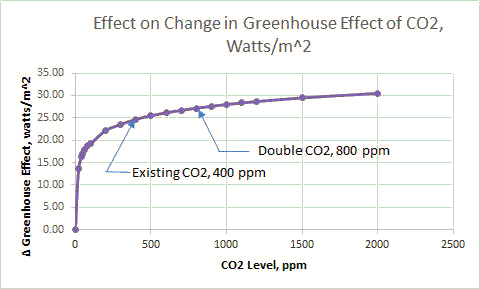



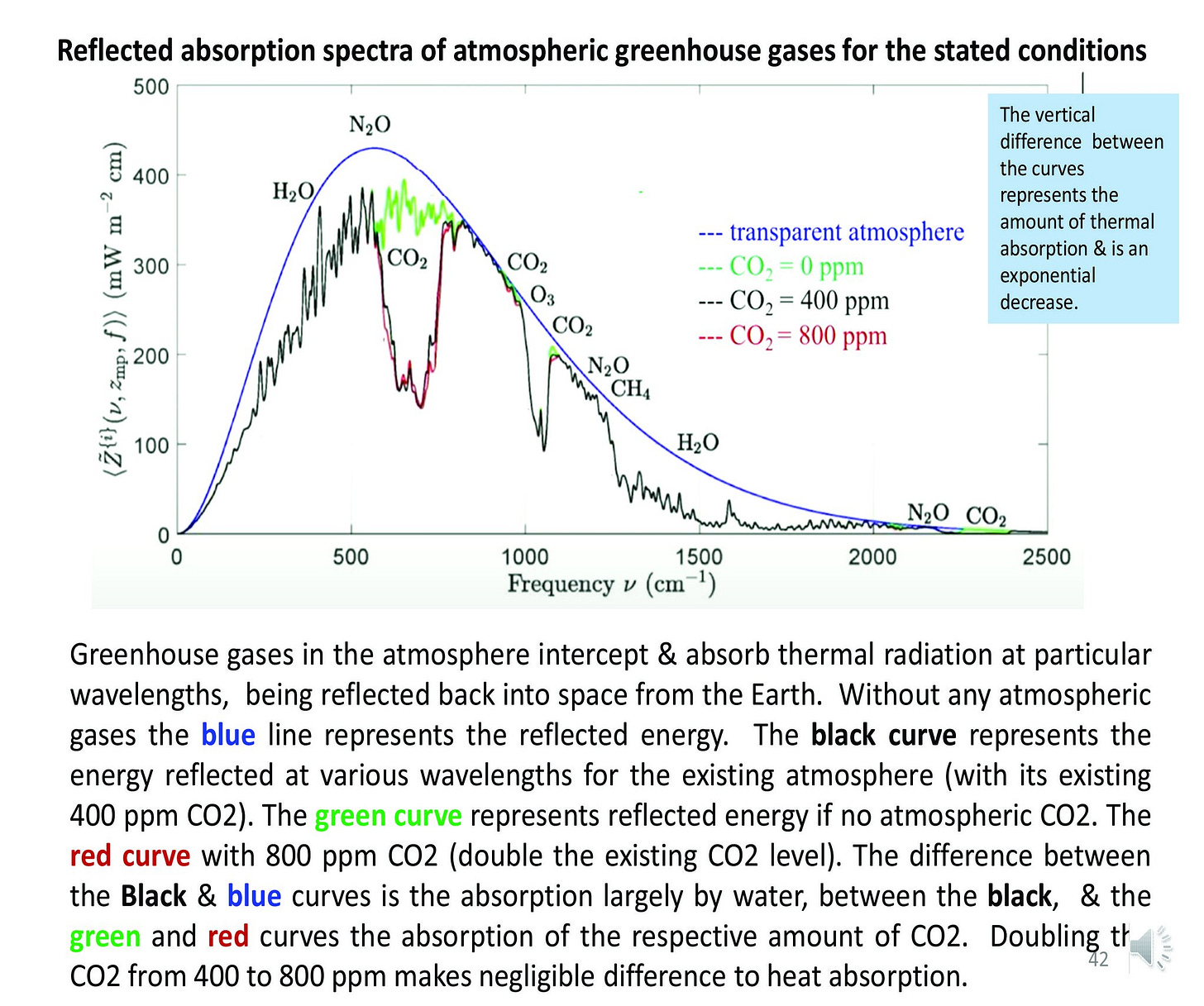

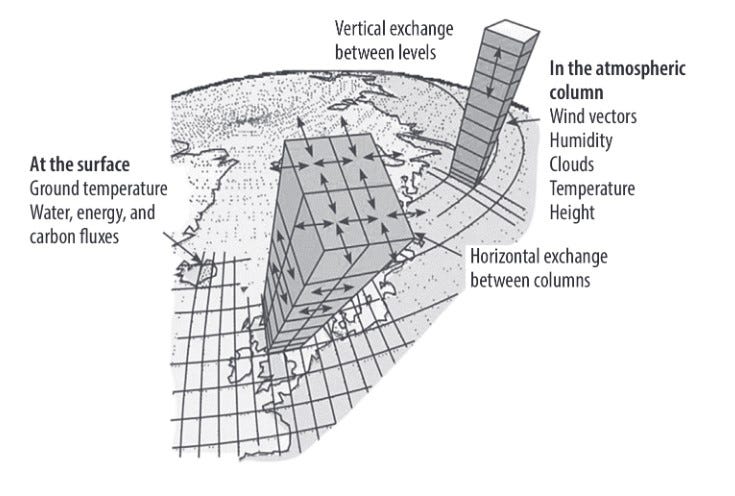

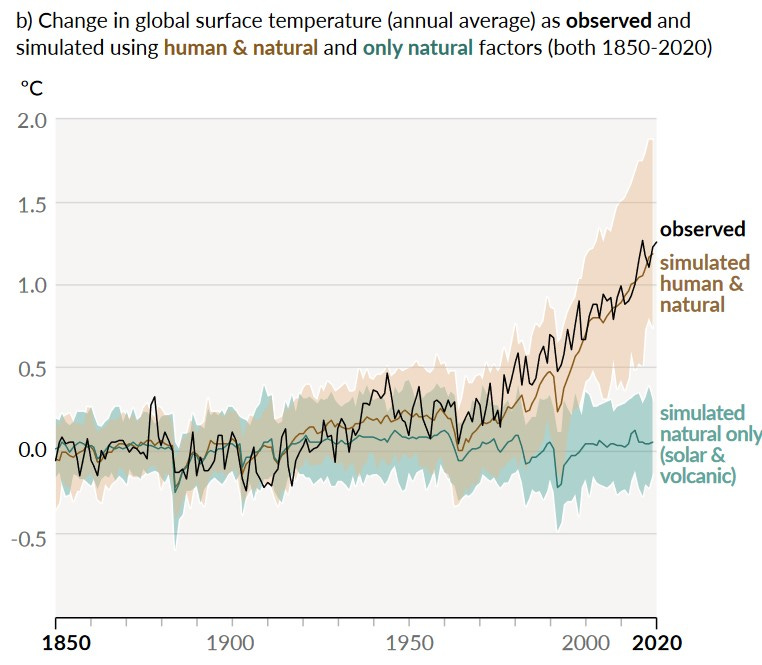


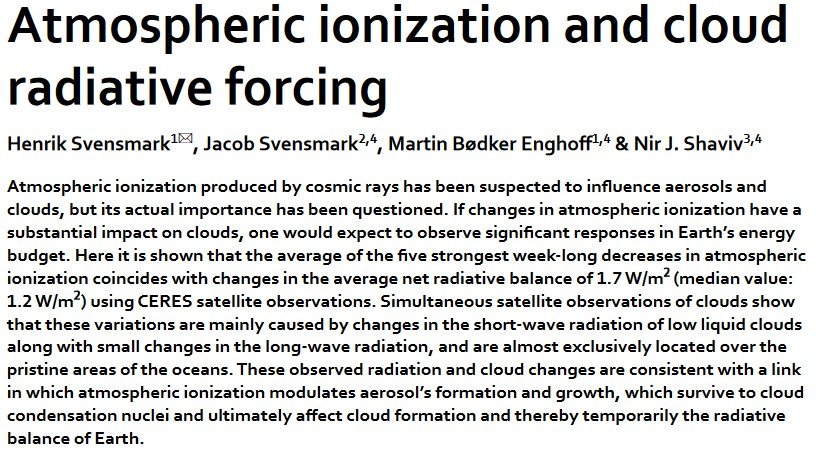
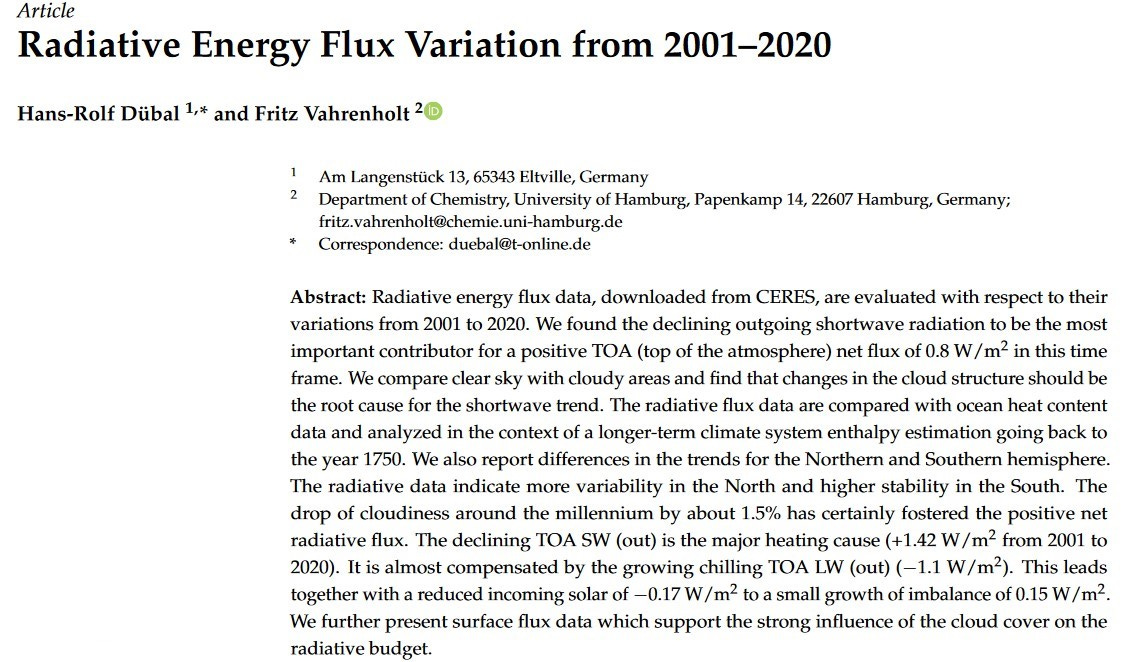



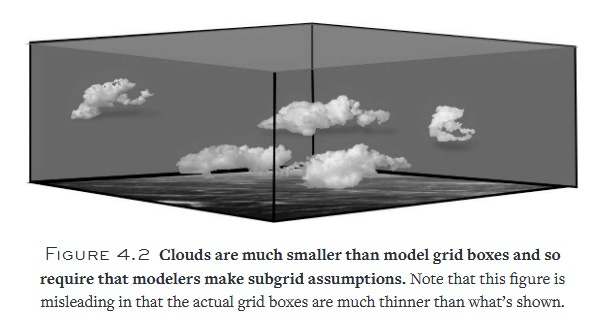


It’s strange not seeing “show additional replies” from second class citizens…I’m one
Ok part 1 was pretty much just what I expected. Let’s see if part 2 also matches my opinions.